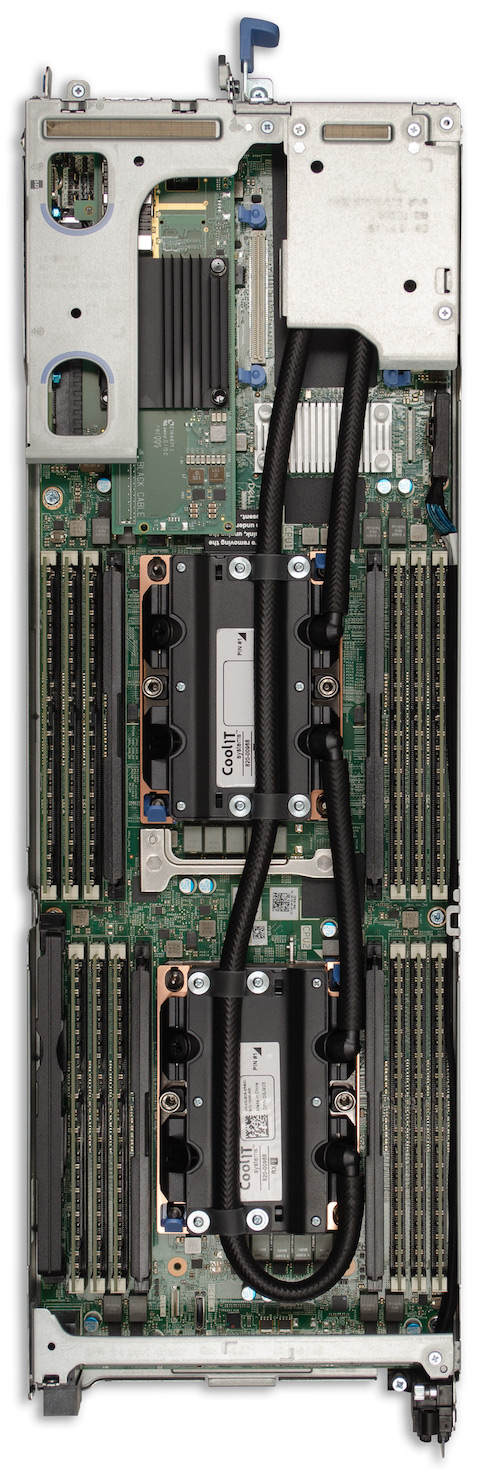What's in a Node?
Frontera is composed of 448,448 processing cores, spread across 8,008 nodes. The architecture of each node is key to Frontera’s performance, but they didn’t come this way out of the box. TACC worked alongside industry partners to design and deploy the nodes that power the fastest supercomputer for academic research in the world.

Low-latency connections between nodes, and across the entire system, allow fast communications that are critical to solving machine learning and big data problems.
In-rack liquid cooling allows for a greater density of nodes, with more efficient heat dissipation. It’s quieter, too!
Frontera’s peak node performance is powered by 56 cores per node.
Processors have gotten faster at a higher rate than memory, so each node is equipped with the fastest high bandwih2h random access memory.
Solid state drives on each node provide local access to compilers and libraries, so that large jobs running across multiple nodes don’t make duplicate requests of the shared filesystem.

